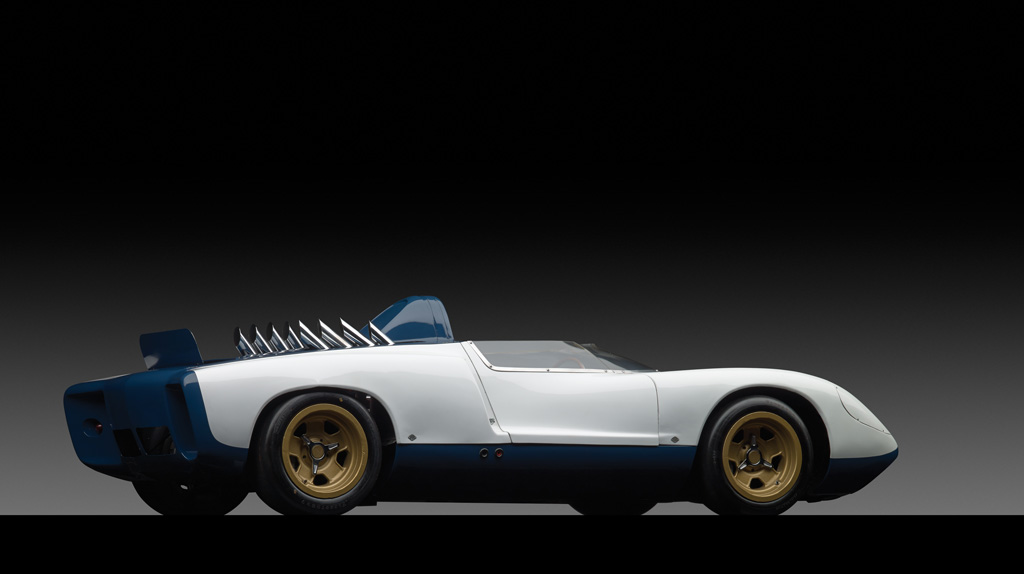From the pages of http://www.corvetteblogger.com
by KEITH CORNETT on NOVEMBER 19, 2013Click images for larger views

This week in New York City, RM Auctions in association with Sotheby’s is presenting the Art of the Automobile exhibition and sale. From horse-drawn carriages to the world’s fastest car, the auction highlights the very best machines from their respective eras.
Representing Chevrolet at the event is Zora Arkus-Duntov’s second Chevrolet Engineering Research Vehicle which today is known simply as CERV II.
Originally designated as G.S 2/3, the CERV II project got the go-ahead in 1962 as Zora believed a special “Super Corvette” was needed to compete with Ferrari’s 248 SP race car and then Ford’s GT40. Over a period of two years, Zora’s engineers and designers crafted the G.S. 2/3. Special features included an experimental four wheel drive system which used dual torque converters to vary the power to the front and rear wheels based on the vehicle’s speed. Powering CERV II was the 500 horsepower 377 cubic inch small block V8 mounted behind the driver. That engine would later be used to power the 1963 Grand Sport Corvettes.
Larry Shinoda and Tony Lapine created an aerodynamic body for CERV II utilizing stressed fiberglass and light-weight materials including magnesium and titanium brought the weight down to a mere 1400 lbs.
In its initial tests, CERV II proved to be very fast. The 500 hp V8 and high-speed gearing gave the experimental racer a top speed of 212 mph. Depending on the gearing, the car could go 0-60 mph at 2.8 seconds with sprint-gearing or 4.0 seconds with its high-speed gears. CERV II achieved up to 1.19 Gs on the skidpad as well.
Just as Zora and his team were finishing up the car in the spring of 1964, GM reinforced their no-racing ban and the car was regulated to become a research and development vehicle for future exotic Corvette ideas.
CERV II was tested over the years with various power plants and in 1969 it received the new all-aluminum 427 ci ZL1 V8. Zora believed the car was packing 700 hp and was capable of besting the 221.160 closed course speed record held at the time by Mark Donohue.
The experimental Corvette was placed into storage in 1970 and around 1974 the car was donated to the Briggs Cunningham Automotive Museum in Costa Mesa, CA where it was displayed until the museum closed in 1986. CERV II then passed through the collections of Miles Collier and then John Moores. Moores donated the car to the Scripps Research Institute and then the current owner who wishes to remain anonymous bought the car in 2001.
Of the many experimental vehicles built by Chevrolet during those heady years of horsepower, CERV II is just one of a handful of engineering cars that found its way outside the automaker and into private hands. It is said that CERV II is the greatest Corvette never built.
CERV II will be offered for sale at RM Auction’s Art of the Automobile this Thursday afternoon, 21 Nov 2013. Initial estimates place the sale between $1,400,000 – $1,800,000.